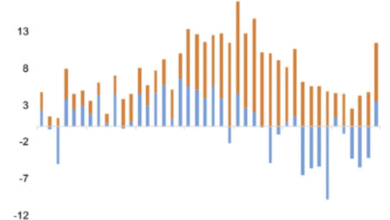Newark Airport Disruptions: Impact on Travelers and Airlines
Recent Newark airport disruptions have prompted travelers to reconsider their flight options, as many steer towards alternate airports like LaGuardia and JFK. Newark Liberty International Airport (EWR), facing a confluence of issues including a shortage of air traffic controllers and inclement weather, has seen a notable impact on flight schedules. American Airlines has acknowledged that these disruptions, while modest, might influence customer bookings as delays increase. The Federal Aviation Administration (FAA) has intervened, mandating a temporary flight reduction at Newark to mitigate severe airport congestion. As new solutions emerge to address these challenges, passengers are left navigating a complex air travel landscape amid ongoing uncertainties.
Travelers are increasingly finding themselves frustrated by Newark’s recent flight interruptions, leading many to explore alternative options in the nearby New York metropolitan area. With Newark Liberty experiencing significant operational challenges—including staffing shortages and adverse weather conditions—passengers may choose LaGuardia or John F. Kennedy International Airport for more reliable air travel experiences. The situation at Newark has prompted American Airlines to analyze its market position, amid broader industry concerns about flight delays and congestion management. As aviation authorities work on airport congestion solutions, passengers must remain informed about potential changes and impacts on their travel plans. This evolving situation highlights the ongoing dynamics within the airline industry, particularly for major carriers like American Airlines and United.
Impacts of Newark Airport Disruptions on Travel Choices
In light of the recent Newark airport disruptions, many travelers are opting to avoid Newark Liberty International Airport (EWR) in favor of alternatives like LaGuardia and JFK. According to American Airlines’ CFO Devon May, this trend, while noticeable, appears to be modest. Travelers might be booking flights to these other airports, however, this shift reflects a wider effort to seek smoother travel experiences amidst the chaos caused by weather conditions and FAA flight reductions.
The Federal Aviation Administration’s recent directives to reduce flight schedules at Newark has further complicated travel plans for many passengers. As travelers prioritize reliability, they are increasingly weighing options that ensure a smoother journey, placing Newark at a disadvantage. This shift signals a significant change in consumer behavior as flight delays Newark become a deterrent rather than a default choice.
Understanding Flight Delays at Newark Liberty
Flight delays at Newark Liberty International Airport are frequently attributed to a combination of factors including air traffic controller shortages and adverse weather conditions. These setbacks have spurred the FAA to implement stricter flight reduction measures to combat the growing congestion. As travel demand continues to rise, it remains critical for the FAA to find effective airport congestion solutions to mitigate further disruptions.
The impact of these delays is significant, both for airline operations and traveler satisfaction. Airlines like American Airlines and United Airlines are adapting their strategies, either by scaling back flights or adjusting schedules to cope with the reduced capacity caused by ongoing runway construction and staffing issues. Continuing to enhance the efficiency of Newark’s operations is essential to alleviate the strain on travelers who rely on this busy gateway.
Why Newark Liberty is Facing Challenges Amid Roadblocks
Newark Liberty International Airport is currently grappling with multiple challenges that contribute to the overall roadblocks affecting its operations. The shortage of air traffic controllers has compounded the existing problems, leading to waves of flight delays Newark experiences regularly. This situation is further complicated by equipment failures that hinder the airport’s capability to handle peak-time traffic effectively.
Working through these issues, the FAA’s temporary flight reductions at Newark may help, but they also reveal the systemic problems within the nation’s air traffic infrastructure. As the industry awaits significant investments in modernization, Newark must navigate its shortcomings to restore traveler confidence and operational integrity. The collaboration between airports and air traffic control can pave the way for more efficient travel experiences.
Airline Strategies in Response to Newark’s Situation
In the wake of Newark airport disruptions, airlines are reevaluating their strategies to maintain passenger satisfaction and operational stability. American Airlines, which holds a minor percentage of the market share at Newark, is keeping a close eye on changing consumer preferences. With United Airlines dominating the Newark market, decisions taken by smaller airlines become crucial to retaining customer loyalty amidst challenging conditions.
United Airlines has modified its operational approach with a reduction of 35 flights per day, a proactive decision aimed at easing the congestion faced at Newark. This adjustment shows a strategic pivot as airlines recognize the need for flexibility in their scheduling to cope with inevitable delays and traffic management challenges. As travel demand evolves, the ability of airlines to adapt their operational strategies will play a pivotal role in sustaining service levels.
Federal Investments in Air Traffic Control Modernization
Significant federal investments are being earmarked for the modernization of air traffic control systems, promising a much-needed overhaul for facilities like Newark Liberty International Airport. With $12.5 billion allocated in the recent tax bill, the initiative aims to enhance safety, efficiency, and capacity management for the nation’s airspace. Enhancements in technology could alleviate some of the delays and disruption travelers currently face.
Modernizing the air traffic control infrastructure is more than just a financial commitment; it reflects a broader acknowledgment of the growing demands on U.S. airports. The anticipated improvements could lead to better management of flight schedules and reduce instances of airport congestion. These upgrades not only hold promise for Newark but also for other major airports grappling with systemic delays and customer service issues.
Comparative Market Shares at Newark and Other Airports
A comparison of market shares reveals the competitive dynamics among airlines operating at Newark Liberty International Airport. United Airlines commands nearly 70% of the market, leaving American Airlines to hold a mere 4% share. Such disparity in market distribution underscores the importance of United’s strategic decisions amidst ongoing Newark airport disruptions, as they likely have a more pronounced impact on traffic and service levels.
As other airlines observe United’s approach to mitigate the effects of congestion and disruptions, they are prompted to rethink their operational frameworks. The emphasis on flexibility and responsiveness to passenger needs has become crucial in retaining market share, especially as travelers seek alternatives due to recurring flight delays Newark encounters. A collaborative industry response may lead to overall improvements in passenger experiences.
Traveler Expectations During Disruptions
As Newark airport disruptions continue, traveler expectations are evolving, placing a clear demand for greater transparency and reliability from airlines. Passengers are increasingly willing to shift their bookings to better-suited airports, such as JFK and LaGuardia, which they perceive as less impacted by the ongoing difficulties surrounding Newark. This shift illustrates a growing trend where customer experience supersedes loyalty to a specific airline.
Airlines must be cognizant of these changing expectations and work diligently to communicate challenges to passengers while offering solutions that enhance the travel experience. They must ensure that adequate resources are available to assist passengers navigating through disruptions, reinforcing the importance of customer support services during unexpected events.
Long-Term Solutions to Airport Congestion
To address the recurring congestion at Newark Liberty International Airport, airport authorities and airlines must collaborate on long-term solutions to enhance operational efficiency. Initiatives could include better coordination among airlines, improved scheduling tools, and investing in technology that streamlines air traffic management. Enhanced infrastructure, alongside strategic flight distribution, presents a way forward for Newark amid the ongoing disruptions.
In the long run, these strategies can contribute to a decline in flight delays Newark consistently faces, as passenger flow can be managed more effectively. Engaging with government entities to secure funding for necessary upgrades will be fundamental to ensuring the airport can handle increasing traffic while maintaining a robust quality of service for travelers.
The Role of Technology in Enhancing Flight Operations
Technology’s role in improving the overall efficiency of airports is crucial, especially in light of Newark’s challenges. Advanced technologies in air traffic control and management systems can reduce the likelihood of congestion caused by outdated practices. Investing in state-of-the-art equipment can address current gaps and prepare the airport for future demands.
Airlines operating within Newark must also leverage new technological solutions to optimize scheduling and minimize delays. By integrating predictive analytics and machine learning into their operations, airlines can foresee potential disruptions and adjust their strategies proactively, significantly improving customer satisfaction during turbulent times.
Frequently Asked Questions
What are the main causes of Newark airport disruptions recently?
Recent disruptions at Newark Liberty International Airport (EWR) are primarily due to a combination of factors including a shortage of air traffic controllers, equipment failures, runway construction, and inclement weather. The Federal Aviation Administration (FAA) has responded by instructing airlines to reduce flights temporarily to help manage the airport congestion.
How are Newark airport disruptions affecting American Airlines?
Newark airport disruptions have led to some travelers choosing alternative airports like LaGuardia or JFK over Newark Liberty International Airport (EWR). According to American Airlines’ CFO, the impact on their flight bookings is modest, with American Airlines holding about a 4% market share at Newark.
What steps are being taken to address flight delays at Newark airport?
To combat flight delays at Newark Liberty International Airport, the FAA has mandated a reduction in flights to alleviate congestion. Additionally, there is a broader investment plan, including billions allocated by the U.S. government for modernizing the air traffic control system and improving staffing levels.
What can passengers expect regarding flight delays Newark due to congestion?
Passengers flying into or out of Newark Liberty International Airport can expect potential delays, especially due to ongoing runway construction and adverse weather conditions. The FAA has implemented measures to reduce flight numbers temporarily to ease congestion, which is expected to improve the situation gradually.
What are airport congestion solutions being considered for Newark?
Solutions for airport congestion at Newark Liberty International Airport include reducing flight schedules as mandated by the FAA, investing in air traffic control modernization, and enhancing overall system flexibility, as demonstrated by United Airlines’ proactive reduction of flights.
| Key Point | Details |
|---|---|
| Travelers Steering Clear | Some travelers are avoiding Newark Airport (EWR) due to disruptions, opting for LaGuardia or JFK instead. |
| Impact of Disruptions | CFO of American Airlines, Devon May, indicated that the impact is ‘modest’ despite some shifting of bookings. |
| FAA Recommendations | The FAA has directed airlines to cut flights at Newark to ease congestion caused by staffing shortages and failures. |
| Market Share | American Airlines has a 4% share at Newark while United Airlines commands around 70% of the market. |
| Flight Reductions by United | United Airlines has reduced operations by 35 flights daily for flexibility. |
| Future Investments | The U.S. will invest billions in air traffic control system modernization. |
Summary
Newark airport disruptions have led to significant shifts in traveler behavior, with many opting for alternative airports due to continuous operational challenges. Despite reports stating that American Airlines has witnessed a modest decrease in travelers, the situation highlights the ongoing struggles at Newark Liberty International Airport. As airlines and the FAA continue to address these challenges through flight reductions and infrastructure investments, the hope is to restore traveler confidence and maintain efficient operations.




